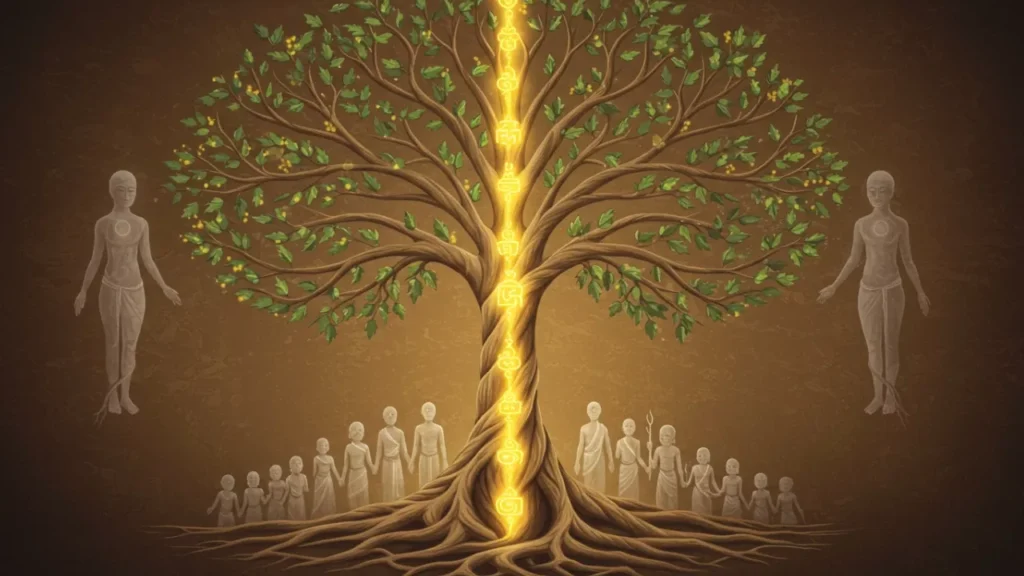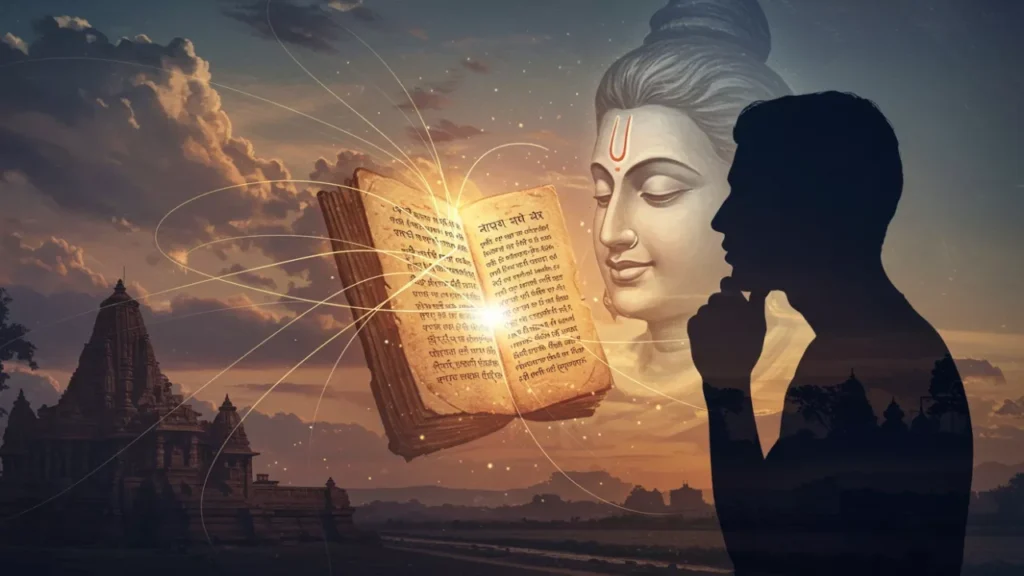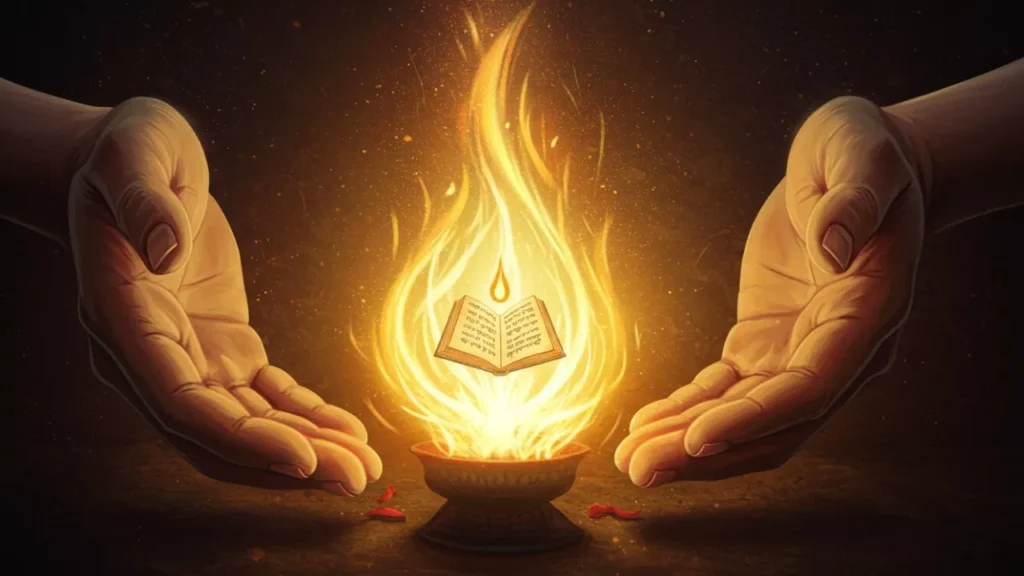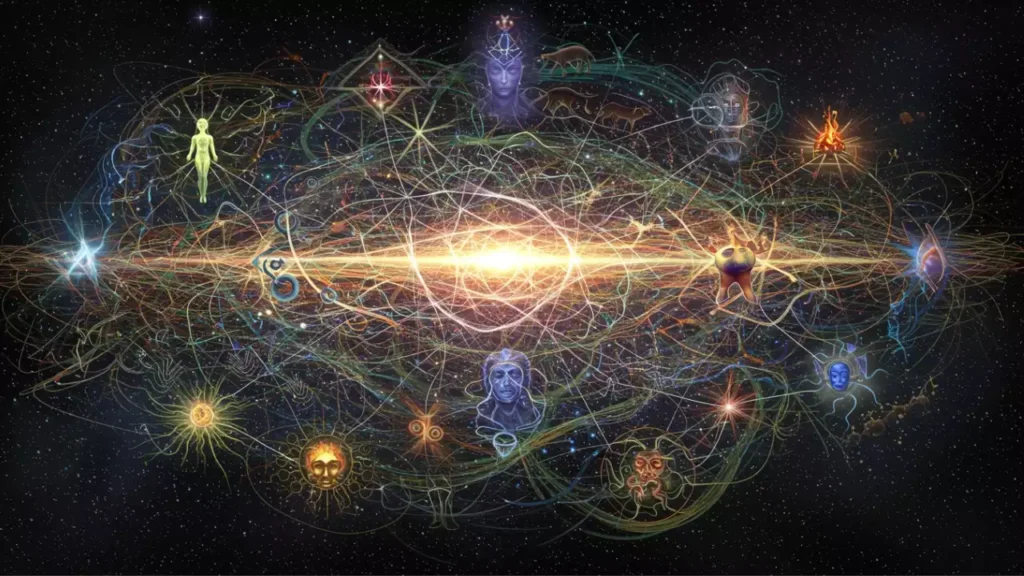Namaste,
Pitrupaksha, that sacred fortnight dedicated to our ancestors, the Pitṛs. We often discuss the rites, the offerings, the significance of days like Mahalaya Amavasya. But underlying all these practices are profound myths, legends, and scriptural teachings found within our Puranas. These are not mere fables of a bygone era. They are repositories of wisdom, designed to guide us, protect us, and illuminate our path through life. Let us delve into the heart of these narratives and uncover the key lessons from Pitrupaksha legends and the wisdom surrounding ancestral reverence.
7 Key Life Lessons from Pitrupaksha Legends: Timeless Wisdom for Today
First, let us remember what our Puranas truly are. They are not simply collections of ancient stories or genealogies, though they contain these aplenty. The scriptures themselves, like the Skanda Purana or Padma Purana, tell us they are extensions of the Vedas, making profound truths accessible through engaging narratives. They speak of creation (Sarga), secondary creation (Pratisarga), genealogies of sages and kings (Vaṃśa, Vaṃśānucarita), cosmic cycles (Manvantara), and, crucially, they are brimming with religious instruction (Dharma), moral codes, and illustrations of the four aims of human life: Dharma (righteous duty), Artha (prosperity), Kama (fulfillment of desires), and Moksha (liberation).
Within this vast ocean of knowledge, the duty towards our ancestors, the Pitṛyajña enacted through Shradh, holds a place of fundamental importance. The Brahma Purana details rituals for the manes, the Padma Purana emphasizes the merit of offering oblations to dead ancestors, and the Skanda Purana highlights the everlasting benefit of Shradh, especially on the new moon day. These practices, and the stories surrounding them, are not just about appeasing the departed; they are profound teaching tools for the living. Let us distill some of the vital lessons from Pitrupaksha legends and associated Puranic wisdom- Lessons from Pitrupaksha Legends

Lesson 1: The Unwavering North Star – The Importance of Dharma (Duty)
Perhaps the most immediate lesson is the emphasis on Dharma, our righteous duty. The performance of Shradh is consistently presented not as an optional act of charity, but as a kartavya – a necessary, holy obligation.
- Pitṛ Ṛṇa (Ancestral Debt): Our tradition speaks of the Pitṛ Ṛṇa, the debt we owe to our ancestors for this very life, this body, this lineage. They navigated life’s challenges, preserved traditions, and paved the way for our existence. Performing Shradh is the primary means of honouring and beginning to repay this profound, sacred debt. It acknowledges our roots and responsibilities.
- Maintaining Cosmic Order (Ṛta): Fulfilling our Dharma, including our duties to the Pitṛs, contributes to the maintenance of Ṛta, the cosmic order. Each being playing their part ensures harmony. Neglecting such fundamental duties creates ripples of disharmony.
- Duty Beyond Emotion: While love and remembrance fuel the rites, the emphasis on duty teaches us that certain responsibilities must be fulfilled regardless of our personal feelings or convenience. It instills discipline and commitment to principles higher than personal whim.
The Puranas constantly reinforce the idea that adhering to one’s Swadharma (one’s specific duties based on stage of life, social role, etc.) is the path to both worldly well-being and spiritual progress. Honoring ancestors is a cornerstone of the householder’s Dharma. This unwavering focus on duty is one of the most crucial lessons from Pitrupaksha legends and related teachings- Lessons from Pitrupaksha Legends

Lesson 2: The Unbroken Chain – Life, Lineage, and Responsibility
The Puranas, with their extensive genealogies (vaṃśānucarita) tracing lineages of kings and sages back through millennia, constantly remind us that we are not isolated individuals. We are part of an unbroken chain, a continuous stream of life flowing from the past, through the present, and into the future.
- Interdependence Across Generations: The very premise of Shradh – that our actions can affect the well-being of those who have departed – highlights this profound interdependence. Their peace is linked to our remembrance; our well-being is linked to their blessings. Legends like King Bhagiratha’s multi-generational effort to bring Ganga down for his ancestors‘ salvation dramatically illustrate this sense of responsibility extending across time.
- Continuity of Vaṃśa (Lineage): Scriptures often state that performing Shradh ensures the perpetuation (santāna) of the family lineage. This isn’t just about physical continuity but about the flow of blessings, merits, and the preservation of family traditions and values. It emphasizes our role as custodians of the lineage for future generations.
- Learning from the Past: Remembering ancestors involves recalling their lives, their virtues, perhaps even their mistakes. This act of remembrance becomes a source of learning, inspiration, and caution for the living descendants.
This understanding of being part of a continuous flow instills a sense of responsibility that extends both backward and forward in time, a key insight among the lessons from Pitrupaksha legends.

Lesson 3: Karma’s Echo and the Ray of Hope – Action, Consequence, and Relief
The concept of Karma – the law of action and reaction – is central to Hindu thought, and it permeates the understanding of the afterlife presented in the Puranas.
- Consequences of Actions: The Garuda Purana, with its vivid descriptions of the Preta realm (ghosthood) and the reasons souls fall into such wretched states (sinful deeds, deceit, violence, neglect of duty), strongly reinforces the principle that our actions in life determine our experiences after death. These tales serve as cautionary reminders of the importance of ethical conduct.
- Suffering is Real: The Puranas don’t shy away from describing potential suffering in the afterlife. This isn’t meant merely to frighten, but to impress upon us the reality of consequences and motivate us towards Dharma.
- The Power of Redemption: Crucially, alongside the law of Karma, the Puranas offer profound hope. They teach that suffering is not necessarily eternal or inescapable. The rites performed by descendants – Shradh, Pinda Daan, Tarpan, especially at powerful Tirthas like Gaya – possess the power to provide tangible relief (tṛpti) and liberation (mukti) even to ancestors suffering due to past negative karma. The Padma Purana speaks of prāyaścitta (expiation) providing a chance for correction. The Skanda Purana mentions that listening to certain sacred stories bestows merit upon the Pitṛs. This demonstrates that while Karma operates, pathways for mitigation and redemption exist, often facilitated by the love and dutiful actions of the living.
This balance between accountability for one’s actions and the ever-present possibility of relief and liberation through sacred rites and divine grace is one of the most profound and compassionate lessons from Pitrupaksha legends.

Lesson 4: The Ultimate Journey – The Pursuit of Liberation (Moksha)
While Shradh addresses the immediate needs and well-being of the Pitṛs, its ultimate aim aligns with the highest goal of Sanatana Dharma: Moksha, liberation from the cycle of birth and death (saṃsāra).
- Elevating Ancestors: The desired outcome of powerful Shradh rites, particularly those performed at places like Gaya, is often described as sending the ancestors to higher celestial realms (Swarga or Pitṛloka) or even the highest abode of Brahma (Brahmaloka) or Vishnu (Vaikuṇṭha), effectively liberating them from lower states of suffering and potentially ending their cycle of rebirth.
- Merit for the Performer: Performing these rites sincerely also generates immense merit (puṇya) for the descendant, purifying their own karma and aiding them on their own path towards liberation. Fulfilling Pitṛ Ṛṇa removes a significant karmic burden.
- Focus on the Divine: The entire Puranic narrative constantly points towards the ultimate reality, whether conceived as Vishnu, Shiva, Devi, or the formless Brahman. Stories like King Prithu’s righteous rule and devotion (Brahma Purana) or countless other tales illustrate how aligning oneself with Dharma and the Divine leads to auspiciousness and liberation. Ancestral rites are one facet of this larger devotional and righteous framework aimed at transcending worldly suffering.
The consistent focus on liberation, for both the ancestors and the performer, reminds us that all righteous actions, including Shradh, should ideally be performed with the ultimate goal of spiritual freedom in mind.

Lesson 5: The Cosmic Tapestry – We Are All Interconnected
The Puranas paint a picture of a vast, interconnected cosmos where different realms and beings constantly interact. Ancestral worship highlights this interconnectedness vividly.
- Linking Worlds: Shradh and Tarpan act as bridges between the physical world (Bhūloka) and the subtle ancestral realm (Pitṛloka). Our offerings traverse these dimensions, demonstrating that these worlds are not entirely separate but influence each other.
- Pitṛs in the Cosmic Order: The fascinating imagery in the Brahma Purana of Pitṛs participating alongside Devas and Rishis in “milking the earth” (a metaphor for drawing forth sustenance and resources) illustrates their active role within the larger cosmic scheme. They are not just passive recipients but beings with their own functions and significance.
- Beyond Human Lineage: Understanding the concept of Deva Pitṛs (Divine Ancestors originating from Brahma or Vishnu) further expands this connection, linking our human lineage to the very fabric of divine creation. Our duties ripple outwards, affecting not just immediate family but contributing to cosmic harmony.
This lesson encourages us to
see ourselves not as isolated units but as integral parts of a vast, multi-layered reality, interconnected with nature, with the divine, and with generations past and future.
Lesson 6: The Sacred Flame – The Purifying Power of Sincere Action and Wisdom
Throughout the Puranas, immense emphasis is placed on the purifying and meritorious nature of performing sacred actions with faith and seeking sacred knowledge.
- Power of Sincere Ritual: Performing Shradh, Tarpan, Dana (charity), or any prescribed rite with genuine faith (Shradh), sincerity (bhāva), and adherence to procedure (as much as possible) is repeatedly declared as highly meritorious (puṇya). It purifies the performer, pleases the deities and ancestors, and brings about desired positive results. The Varaha Purana cautions that rites performed without sincerity are fruitless, highlighting the importance of inner attitude.
- Potency of Sacred Knowledge (Jñāna): Listening to (śravaṇa), narrating (kīrtana), and contemplating (manana) the sacred stories and teachings contained within the Puranas is itself described as a powerful act of purification. It destroys sins, bestows merit, grants longevity, wealth, happiness, and ultimately leads towards liberation. The Skanda Purana mentions Pitṛs gaining merit simply by listening to certain accounts.
- Knowledge Over Ignorance: The Varaha Purana suggests interpreting Puranic myths on abstract levels, often representing the eternal struggle and ultimate triumph of knowledge (jñāna) over ignorance (ajñāna). Engaging with these texts is thus a path towards wisdom.
These teachings emphasize that both sincere action (karma yoga) and the pursuit of wisdom (jñāna yoga), often combined with devotion (bhakti yoga), are powerful tools for self-purification, spiritual growth, and fulfilling our duties effectively, including those towards our ancestors.

Lesson 7: Bringing Ancient Wisdom into Our Lives Today
These lessons from Pitrupaksha legends are not confined to ancient texts. They offer practical guidance for navigating our lives today:
- Embrace Duty: Understand and fulfill your responsibilities – to family, society, and your own spiritual growth – with sincerity.
- Cultivate Gratitude: Regularly express gratitude for your parents, family, teachers, and ancestors. Acknowledge the foundations they laid.
- Remember Your Roots: Take time to learn about your family history. Remember departed loved ones, not just during Pitrupaksha, but throughout the year.
- Act Mindfully: Be aware that your actions have consequences, both seen and unseen. Strive to live ethically and compassionately.
- Seek Relief through Positive Action: If facing difficulties, remember the power of positive actions – prayer, charity, seeking guidance, performing remedial rites with faith – to bring relief and change circumstances.
- Value Knowledge: Engage with sacred texts and teachings. Seek understanding, not just blind adherence. Knowledge empowers and purifies.
- Practice Sincerity: Whatever ritual or good deed you perform, do it with a sincere heart. Intention matters immensely, especially in Kali Yuga.
Conclusion(Lessons from Pitrupaksha Legends): The Enduring Light of Ancestral Wisdom
The period of Pitrupaksha, and the rich tapestry of myths, legends, and teachings surrounding ancestral reverence in our Puranas, offers us far more than just ritualistic guidelines. It provides a profound blueprint for living a meaningful life grounded in duty, gratitude, responsibility, and interconnectedness.
The core lessons from Pitrupaksha legends remind us of the eternal nature of Dharma, the continuity of lineage, the inescapable law of Karma coupled with the hope of redemption, the ultimate pursuit of Moksha, the intricate web connecting all existence, and the purifying power of sincere action and sacred wisdom. These are timeless truths, as relevant today in our bustling modern world as they were in ages past.
May you carry these gems of wisdom in your hearts, allowing them to illuminate your path, strengthen your connection to your roots, and inspire you to live a life that honours both your ancestors and your own divine potential.
|| हरि ॐ तत् सत् ||

